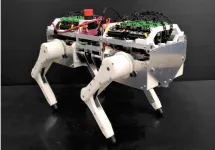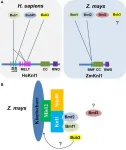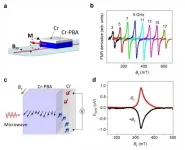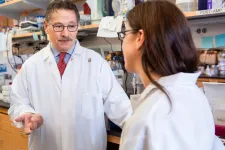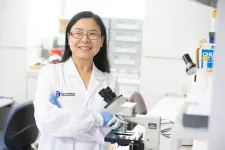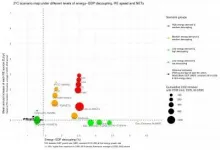INFORMATION:
How to predict severe influenza in hospitalised patients
2021-05-11
(Press-News.org) Published today in Nature Communications, the team from the Peter Doherty Institute for Infection and Immunity (Doherty Institute), Alfred Health and Monash University sought to understand which patients would recover quickly from influenza and which would become severely ill.
The four-year project took samples from patients hospitalised with influenza at up to five time points during their hospital stay, and 30 days after discharge. They analysed the breadth of the immune response, enabling them to describe the specific roles of several different types of immune cells, including killer and helper T cells, B cells and innate cells.
University of Melbourne Dr Oanh Nguyen, Research Fellow at the Doherty Institute, said two significant findings of the research include understanding the biomarkers that drive recovery and identifying four specific cytokines that cause serious inflammation during influenza virus infection.
"Cytokines are key molecules needed for a robust immune response. However, too much of these cytokines can result in inflammation and in the case of influenza, much more serious infection," Dr Nguyen said.
"We found four specific types of cytokines that would cause severe inflammation, and this provides clinicians the ability to predict whether a patient will become really sick with influenza."
The team also consistently saw large populations of immune cells called T-follicular helper cells, working in parallel with antibody-secreting cells, in patients at around three days prior to their recovery.
"These findings are the first to report the importance of T-follicular helper cells during acute influenza virus infection, following previous discoveries from our work and others on the key role of these immune cells after influenza vaccination. Signs of these cells could be used as a biomarker for recovery from influenza," Dr Nguyen said.
Professor Allen Cheng, Director of Infection Prevention and Healthcare Epidemiology at Alfred Health and Professor of Infectious Diseases Epidemiology at Monash University, said this had been a great collaboration between clinicians and world-renowned immunologists, and a good example of 'bedside to bench' science.
"The COVID-19 pandemic, and before this, the swine flu pandemic, has highlighted the importance of improving our understanding of respiratory viral infections to improve the identification of patients at risk of severe outcomes and potentially future treatments," Professor Cheng said.
University of Melbourne Professor Katherine Kedzierska, Laboratory Head at the Doherty Institute and world-leading influenza immunologist, said this research laid the groundwork for her team's understanding of how the immune system responds to COVID-19.
"Because of our years of experience, experimental set up, knowledge and collaborations with Alfred Health for this and other influenza studies, we had the speed and agility to apply our work to immune studies of COVID-19," Professor Kedzierska said.
"This influenza study was the blueprint for our COVID-19 research."
ELSE PRESS RELEASES FROM THIS DATE:
Discovering candidate for reflex network of walking cats: Understanding animals with robots
2021-05-11
A group of researchers from Osaka University developed a quadruped robot platform that can reproduce the neuromuscular dynamics of animals (Figure 1), discovering that a steady gait and experimental behaviors of walking cats emerged from the reflex circuit in walking experiments on this robot. Their research results were published in Frontiers in Neurorobotics.
It was thought that a steady gait in animals is generated by complex nerve systems in the brain and spinal marrow; however, recent research shows that a steady gait is produced by the reflex circuit alone. Scientists discovered a candidate of reflex circuit to generate the steady walking motion ...
Researchers reveal Knl1 gene function in plants
2021-05-11
Dr. HAN Fangpu's group from the Institute of Genetics and Developmental Biology of the Chinese Academy of Sciences reports the identification and functional study of the maize Knl1 gene in an article published online in PNAS. The gene is a major component of the KMN network that links centromeric DNA and the plus-ends of spindle microtubules. It also plays an important role in kinetochore protein recruitment.
The kinetochore complex that assembles on the centromeres mediates the proper partitioning of chromosomes to daughter cells during the cell cycle. However, kinetochore proteins undergo frequent mutations and coevolve with their interaction partners, leading to great diversity in kinetochore composition in eukaryotes.
Functional ...
Researchers develop magnetic thin film for spin-thermoelectric energy conversion
2021-05-11
A team of researchers, affiliated with UNIST has recently introduced a new class of magnetic materials for spin caloritronics. Published in the February 2021 issue of Nature Communications, the demonstrated STE applications of a new class of magnets will pave the way for versatile recycling of ubiquitous waste heat. This breakthrough has been led by Professor Jung-Woo Yoo and his research team in the Department of Materials Science and Engineering at UNIST.
Spin thermoelectrics is an emerging thermoelectric technology that offers energy harvesting from waste heat. ...
In 'minibrains,' hindering key enzyme by different amounts has opposite growth effects
2021-05-11
Like many around the world, the lab of Professor Mriganka Sur in The Picower Institute for Learning and Memory at MIT has embraced the young technology of cerebral organoids, or "minibrains," for studying human brain development in health and disease. By making a surprising finding about a common practice in the process of growing the complex tissue cultures, the lab has produced both new guidance that can make the technology better, and also new insight into the important roles a prevalent enzyme takes in natural brain development.
To make organoids, scientists take skin cells from a donor, induce them to become stem cells and then culture those in a bioreactor, guiding their development with the addition of growth ...
People are persuaded by social media messages, not view numbers
2021-05-11
COLUMBUS, Ohio - People are more persuaded by the actual messages contained in social media posts than they are by how many others viewed the posts, a new study suggests.
Researchers found that when people watched YouTube videos either for or against e-cigarette use, their level of persuasion wasn't directly affected by whether the video said it was viewed by more than a million people versus by fewer than 20.
What mattered for persuasion was viewers' perception of the message as truthful and believable.
"There wasn't a bandwagon effect in which people were persuaded by a video just because ...
Gene therapy offers a potential cure to children born without immune system
2021-05-11
An international team of researchers at Great Ormond Street Hospital (GOSH), and University of California, Los Angeles (UCLA) have developed a gene therapy that successfully treated 48 out of 50 children with a form of severe combined immunodeficiency that leaves them without an immune system.
Severe combined immunodeficiency due to adenosine deaminase deficiency, also known as ADA-SCID, is a rare, life-threatening disease that prevents children from living a normal life. It is caused by mutations in the gene that creates the enzyme adenosine deaminase, which is essential to a functioning immune system.
Children with ADA-SCID have no immune system and, if left untreated, the condition can be fatal within the first two years of life. Day-to-day activities ...
Gene therapy offers potential cure to children born without an immune system
2021-05-11
An experimental form of gene therapy developed by a team of researchers from UCLA and Great Ormond Street Hospital in London has successfully treated 48 of 50 children born with a rare and deadly inherited disorder that leaves them without an immune system.
Severe combined immunodeficiency due to adenosine deaminase deficiency, or ADA-SCID, is caused by mutations in the ADA gene that creates the enzyme adenosine deaminase, which is essential to a functioning immune system. For children with the condition, even day-to-day activities like going to school or playing with friends can lead to dangerous, life-threatening infections. If untreated, ADA-SCID can be fatal within the first two years of life.
The investigational gene therapy method involves first collecting ...
A comprehensive map of the SARS-CoV-2 genome
2021-05-11
CAMBRIDGE, MA -- In early 2020, a few months after the Covid-19 pandemic began, scientists were able to sequence the full genome of the virus that causes the infection, SARS-CoV-2. While many of its genes were already known at that point, the full complement of protein-coding genes was unresolved.
Now, after performing an extensive comparative genomics study, MIT researchers have generated what they describe as the most accurate and complete gene annotation of the SARS-CoV-2 genome. In their study, which appears today in Nature Communications, they confirmed ...
Boosting body heat production: A new approach for treating obesity
2021-05-11
A receptor that helps conserve energy when food is scarce may be the key to a safer approach to treating diet-induced obesity, research led by the Garvan Institute of Medical Research has revealed.
In a study using experimental models and fat tissue biopsies from obese individuals, the team revealed that blocking a specific receptor of the molecule neuropeptide Y (NPY), which helps our body regulate its heat production, could increase fat metabolism and prevent weight gain.
"The Y1 receptor acts as a 'brake' for heat generation in the body. In our study, we found that blocking this receptor in fat tissues transformed the 'energy-storing' fat into 'energy-burning' fat, which ...
1.5°C degrowth scenarios suggest need for new mitigation pathways: Research
2021-05-11
The first comprehensive comparison of 'degrowth' scenarios with established pathways to limit climate change highlights the risk of over-reliance on carbon dioxide removal, renewable energy and energy efficiency to support continued global growth - which is assumed in established global climate modelling.
Degrowth focuses on the global North and is defined as an equitable, democratic reduction in energy and material use while maintaining wellbeing. A decline in GDP is accepted as a likely outcome of this transition.
The new modelling by the University of Sydney and ETH Zürich includes high growth/technological change and scenarios summarised ...
